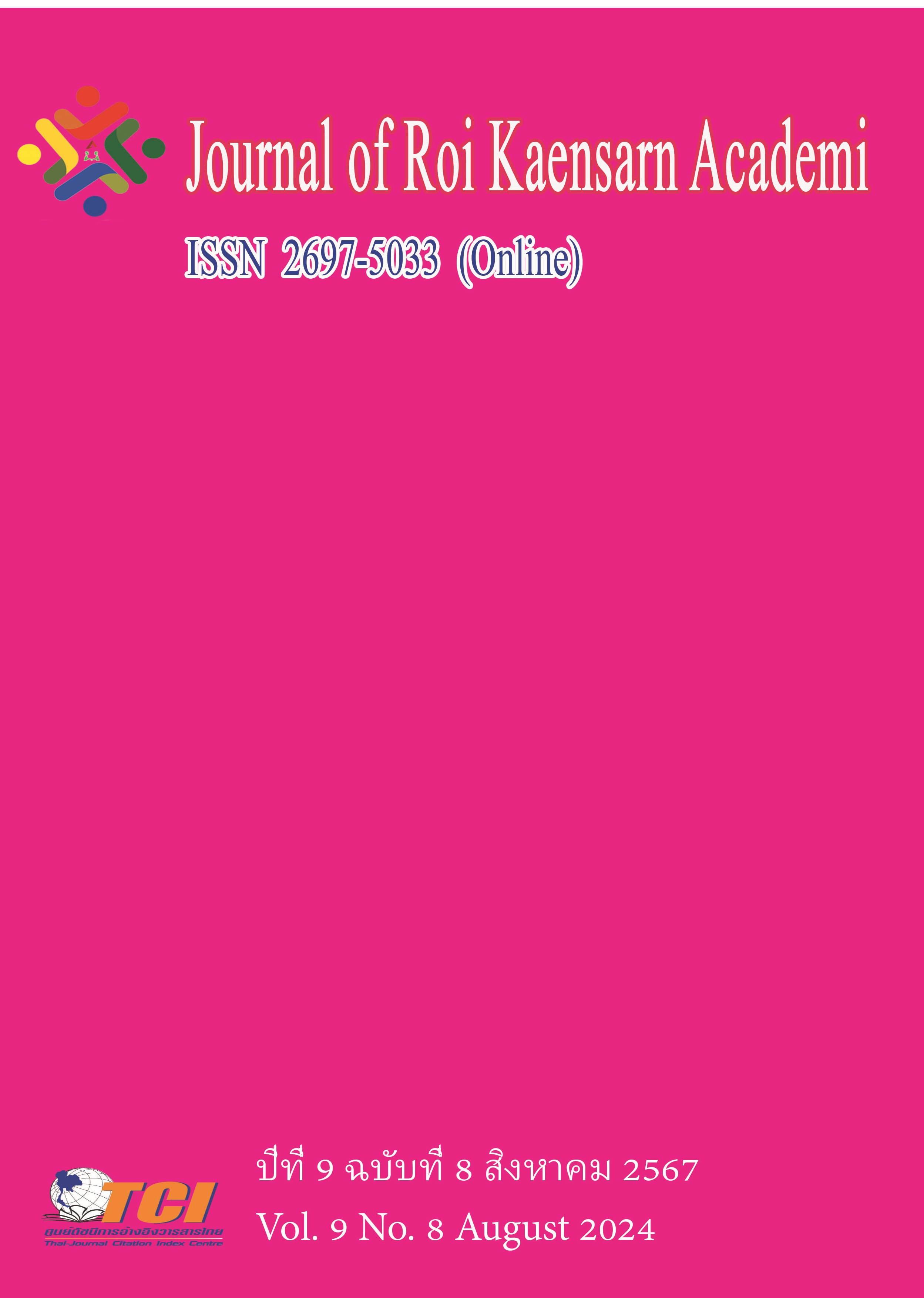Compiling Piano Improvisation Exercise Book for Grade 3 Student at School of Music University of Jinan, Shandong Province, China
Main Article Content
บทคัดย่อ
The purpose of this study were: 1)To study Piano Improvisation from experts.2) To create piano Improvisation exercise book. 3) To teach students in the experimental group by using piano improvisation exercise book evaluated and approved by IOC. 4) To evaluate the effect of piano Improvisation exercise book for teaching piano Improvisation.
This study adopts qualitative and quantitative research methods. In the qualitative research, it's interviewed experts and made specific tracks suitable for grade 3 students according to the interviews of` experts, with the aim of improving students' interest in learning Piano Improvisation and their performance ability, and observing students' learning dynamics. In the quantitative research, through the evaluation of the exercise book of Piano Improvisation by the International Olympic Committee, 10 third-grade students were selected from a group of 24 students in School of Music University of Jinan to carry out experiments. Combined with the Piano Improvisation exercise book, the test scores were collected and compared through formative tests (triple) and summative tests to test the learning effect of students using the Piano Improvisation exercise book.The results show that: (1)Through the study and interview of Piano Improvisation teaching experts, suitable for Grade 3 students at School of Music University of Jinan were made, and a teaching guide combining theory with teaching was made by reading relevant literature on Piano Improvisation teaching. (2) The evaluation score of the Piano Improvisation exercise book is 0.72>0.50.Experts believe that the design and implementation of the Piano Improvisation exercise book is very reliable, reasonable and comprehensive, which meets the requirements of the Piano Improvisation exercise book and can be used as a reference for students to learn Piano Improvisation. (3) Through three formative test scores and the final summative test scores, from the first formative test score (all of students get Grade C) to the summative test score (100% get Grade B or above), the results show that this book has a good guiding role in improving Jinan students' ability to learn Piano Improvisation, and also proves that Jinan students are increasingly enthusiastic about learning Piano Improvisation.(4)Generally speaking. By compiling this exercise book, we have provided a valuable teaching resource for music educators and students in Jinan University, and also made positive contributions to the innovation and development of piano teaching.
Article Details
เอกสารอ้างอิง
Burnsed, C. V. (1978). The Development and evaluation of an introductory Jazz Improvisation Sequence For Intermediate Band Students. University of Miami.
Damron, B. L. (1973). The Development and evaluation of a Self-instructional Sequence In Jazz Improvisation. The Florida State University.
Evans, R. (2001). How to Play Piano: Everything You Need to Know to Play the Piano. St. Martin's Publishing Group.
Mortensen, J. J. (2020). The Pianist's Guide to Historic Improvisation. Oxford University Press, USA.
Randall, M. O. (1993). The history of piano improvisation in western concert music. University of Cincinnati.
Sowash, B. (2007). Improvisation at the Piano: A Systematic Approach for the Classically Trained Pianist. The American Music Teacher. 57 (3), 61.
Wigram, T. (2004). Improvisation: Methods and techniques for music therapy clinicians, educators, and students. Jessica Kingsley Publishers.

